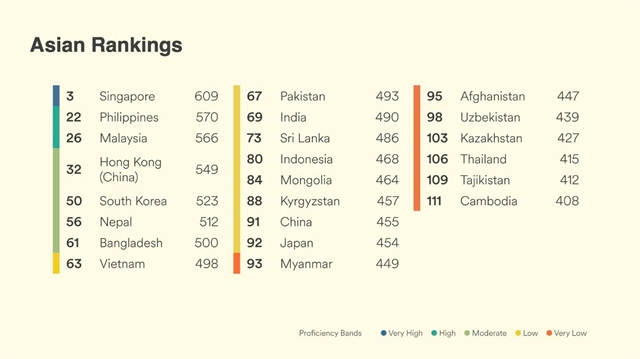 Economy
Economy

Việt Nam’s animal husbandry sector is expected to face difficulties this year. It is looking for ways to sustain growth and improve its competitiveness. Hoàng Thanh Vân, director general of the Department of Livestock Husbandry, tells Việt Nam News about it.
 |
| Hoàng Thanh Vân, director general of the Department of Livestock Husbandry. — VNS Photo |
Việt Nam’s animal husbandry sector is expected to face difficulties this year. It is looking for ways to sustain growth and improve its competitiveness. Hoàng Thanh Vân, director general of the Department of Livestock Husbandry, tells Việt Nam News about it.
What are the new trends globally?
There are three important trends in the world today.
The first trend is that they actively follow technology 4.0. This is inevitable in this era and Việt Nam must follow this trend too.
The second trend is that they focus on production based on product and value chains. This is a trend in most countries, and Việt Nam is also following it and achieving early results. I think Việt Nam can quickly achieve good results globally.
Thirdly, world food production must meet each region’s standards in terms of quality and food safety to meet consumers’ increasing requirements.
Việt Nam’s husbandry sector must understand and follow global trends to further integrate into the world market.
Import of meat has gone up relentlessly in recent years. How does this impact domestic production?
Amid international integration, import of animal products as well as other products into Việt Nam is normal. We cannot ban the import of products.
Imported animal products account for only 9-11 per cent of total domestic production each year.
Most imported animal products are very cheap, which benefits consumers but creates intense competition for domestic products. On the other hand, imports help domestic breeders look for ways to lower their prices and improve competitiveness.
We are very actively looking to create a legal framework to ensure that all meat, milk and eggs imported into Việt Nam are of good quality and ensure sound competition in the domestic market.
Recently Vinacapital invested in Ba Huân JSC. How do you see the investment trend in the egg market?
Việt Nam’s egg production achieved a breakthrough last year: For the first time egg production surpassed the 10 billion mark to reach approximately 11 billion.
Many Vietnamese firms have made great investment in egg production technology, which enables them to improve quality as well as produce more omega 3 eggs and making the colour of the egg shell in accordance with the trends in importing countries.
Currently we mainly export salted duck eggs, but not in great volumes: only some tens of millions to 100 million eggs a year. In addition, businesses have also exported large volumes of quail eggs. We are striving to export one billion eggs of all kinds a year in the near future.
Per capita egg consumption in the domestic market is about 150 per year, which is very low compared to the rest of the world.
The domestic market consumes about 15 billion eggs a year. Việt Nam’s egg production capacity is very large. If we have a good consumption market, we can produce up to 20 billion eggs a year.
What will the husbandary sector do to expand market?
This year will continue to be a very difficult one for the husbandry industry in Việt Nam.
Firstly, with deeper integration, many animal breeding giants intend to enter the Vietnamese market, with their products set to be very competitive in the market.
Secondly, restructuring the industry has progressed at a very slow pace in some localities and regions. If we do not speed up restructure, we will not have sufficient competitive capacity.
Thirdly, brands, prices and the quality of some products need to be improved further in line with international quality standards as well as consumers’ requirements.
With such difficulties and challenges, the livestock sector is seeking solutions like reviewing restructuring and organising a series of seminars on pork, egg, as well as activities to find new markets for its animal products.
In addition, the industry will develop mechanisms and policies to encourage enterprises and producers to use new technologies to reduce costs and improve quality.
Can you tell us about the achievements of the animal husbandry sector last year?
Việt Nam’s husbandry industry achieved a rather good growth rate of nearly 3 per cent in 2017. The figure did not reach the expected rate of 3.5 per cent, but in a difficult year like last year, obtaining such a growth rate was a great effort.
A very new point in 2017 was that the sector focused on restructuring production towards increasing value addition through many solutions, including reviewing livestock data of regions, provinces and large corporations, improving production management, and reviewing mechanisms, policies and administrative procedures to facilitate better production.
That is a very positive change.
We were very successful in applying new technologies in the field of animal breeding. There emerged new ones such as using liquid feed and using probiotic fermentation for making animal feed.
We actively organised technical exchanges with other countries and imported new varieties, especially beef cattle and dairy cows.
We have also managed to reduce production costs to boost demand for the sector’s products in domestic and export markets. — VNS









